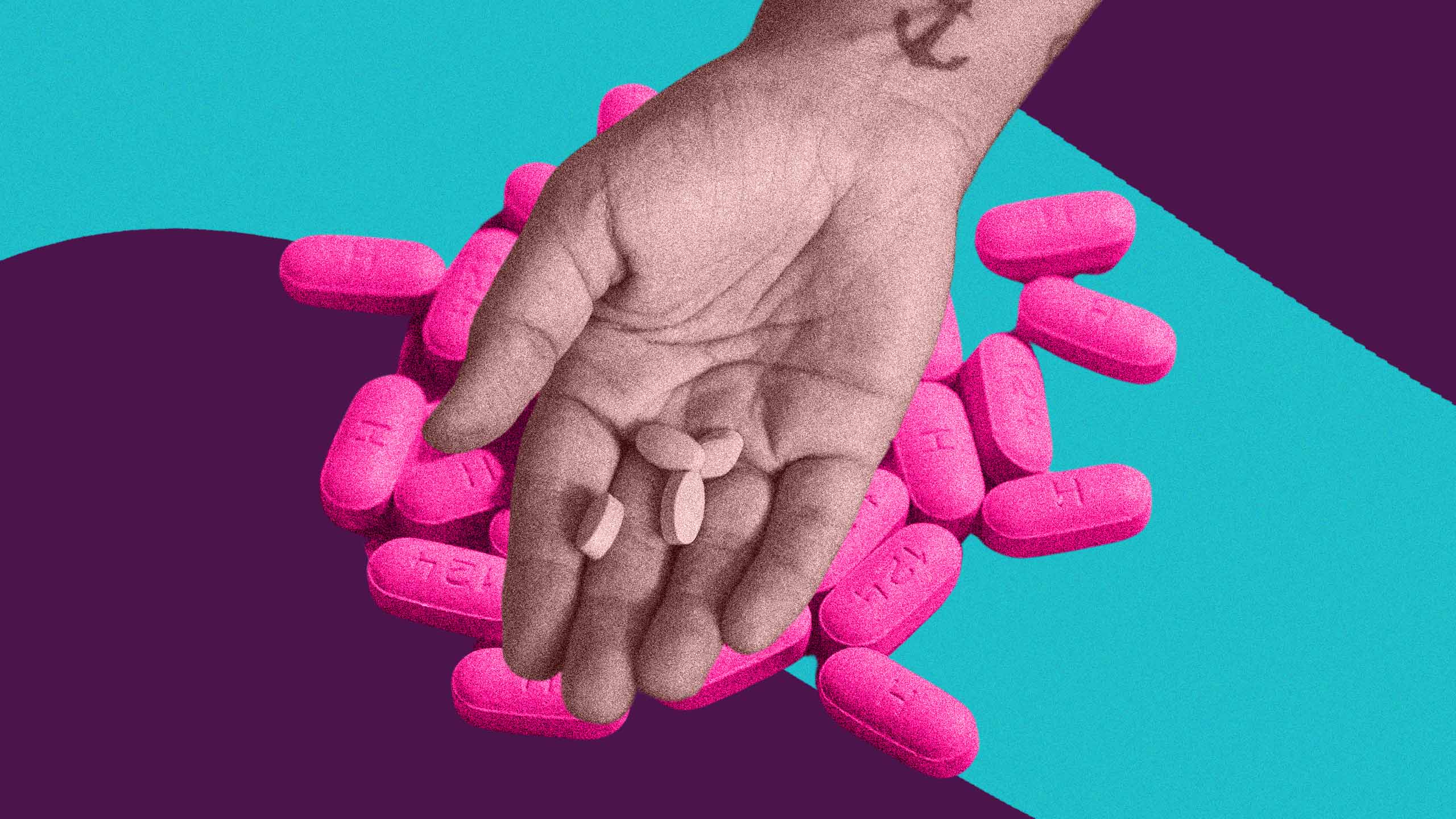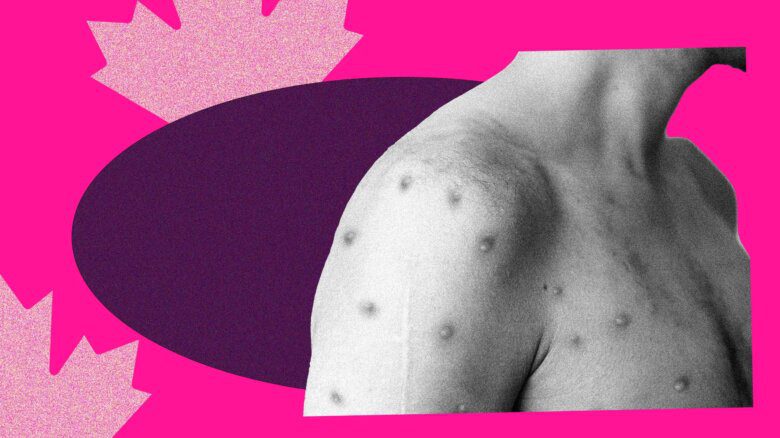These days, HIV stigma persists despite the fact that medications like PrEP and PEP can prevent transmission completely when taken correctly—and antiretroviral therapy (ART) now acts as an effective long-term treatment for those living with HIV.
PrEP and PEP are prescribed for people who are HIV-negative, but are at risk of exposure. ART, for its part, lowers the amount of HIV in the body, rendering a person’s viral load “undetectable” and therefore preventing them from spreading the virus to others.
In Canada, more than 60,000 people live with HIV, 90 percent of whom are diagnosed. Of those with diagnoses, 87 percent are on treatment, and 95 percent of those on treatment have achieved viral suppression according to CATIE, a public health organization that offers HIV and Hepatitis C information to Canadians.
U=U—also known as “Undetectable equals Untransmittable”—is a campaign centred on the message that people living with HIV have zero risk of transmitting the virus to others if they receive proper treatment and their viral loads become undetectable.
Randy Davis, a communications manager at the Canadian AIDS Society who is HIV-positive himself, emphasizes the transformative power of the U=U campaign. Davis contracted HIV in 2015 and has remained on ART and undetectable since then.
“[U=U] has made people understand that, ‘Oh, now I can have a family. Now I can not worry or stress about the risk of passing it on to a partner.’” he says. “It’s helped reduce the stigma that HIV-negative people might harbour, as well as the self-stigma that people living with HIV might have.”
But how does U=U work? Xtra spoke to medical and advocacy experts across Canada to break down what you need to know about how to become undetectable, how to access treatment, and what you should know about HIV treatment and prevention.
What is U=U?
As mentioned above, U=U is short for “undetectable equals untransmittable.”
The U=U campaign was created in 2016 by the Prevention Access Campaign (PAC) in collaboration with advocates, scientists and medical experts worldwide. The campaign aims to destigmatize HIV/AIDS and to challenge the notion that HIV-positive people are vectors of disease.
Dr. Julio Montaner, executive director and physician-in-chief of BC Centre for Excellence in HIV/AIDS, explains that, when taken as prescribed, ART can render a person incapable of transmitting the virus to others. ART reduces the viral load (of HIV in the body) to a level that keeps the immune system healthy—also known as viral suppression.
When your immune system is healthy, your body can produce more CD4 counts. CD4 cells, also known as T-cells, are a type of immune cell that helps you fight infections. When you’re on HIV treatment, your CD4 count will increase with time. A normal CD4 count is anywhere from 500 to 1,500 copies per millilitre of blood.
How does a person become undetectable?
A person becomes undetectable when they stick to the ART medication as prescribed. ART reduces the HIV levels in the body to a very low level, keeping the immune system healthy, rendering someone undetectable.
While HIV specialists like Dr. Montaner consider viral suppression and undetectable levels to be the same, there are different standards for each. In Canada, undetectable levels are defined as below 40 or 50 copies per millilitre of blood while viral suppression is defined as fewer than 200 copies per millilitre of blood. Despite these differences, it’s important to note that as long as someone has maintained viral suppression for at least six months after their first undetectable test result, the likelihood of transmission is zero, according to the U.S. Center for Disease Control and Prevention (CDC).
How do I know if my viral load is undetectable?
The only way to know if your viral load is undetectable is to get tested via the two main approaches: standard or rapid test. Usually, people on antiretroviral therapy achieve an undetectable viral load within one to six months after beginning treatment, according to the CDC. Still, it’s advisable to get tested every six to four months after becoming undetectable.
What evidence supports U=U?
Backed by three major clinical studies from 2008 to 2016, U=U has remained central in proving that people with undetectable viral loads pose no risk of transmission. Major organizations such as the CDC and the World Health Organization (WHO) have endorsed U=U.
My partner is HIV-positive with an undetectable viral load. Will I contract HIV if we have sex without a condom?
The short answer is no.
As long as someone has adhered to their medication as prescribed, and has received at least two consecutive blood tests signalling a suppressed viral load, there is zero risk of transmission. That being said, it’s up to the person to decide whether condoms or PrEP are an option they’d like to explore, as ART doesn’t protect against other STIs like gonorrhea or syphilis.
Can my undetectable viral load become detectable again?
It’s important to note that ART does not cure HIV or eliminate the virus from the body entirely. Instead, it helps control the virus to the point that the likelihood of transmission is zero. A person can go back to detectable levels when medication is skipped regularly or if people develop drug resistance.
HIV drug resistance can occur when the virus replicates due to non-adherence, poor drug absorption or drug interactions while on ART. For example, if a person who infected you had an already drug-resistant strain or if they were exposed to HIV medications when first infected—such as if a pregnant person takes medications to prevent transmitting HIV to their baby, but the baby develops the virus anyway. The good news is that you can switch your ART drug combination so your treatment becomes effective again.
Does an occasional missed dose affect U=U?
U=U depends on medication adherence. If you already have an undetectable viral load, an occasional missed dose won’t alter your status, according to the AIDS Network. Still, it’s best to stay on track to keep that viral load undetectable and lower the risk of transmission.
Does U=U apply to forms of transmission other than sex?
As of now, U=U applies to sexual contact, including, anal, oral and vaginal sex. It also includes parent-to-child transmission—HIV can pass through the placenta to the fetus. During delivery, the baby can also be exposed to HIV through blood or other fluids if the parent isn’t undetectable.
While Dr. Montaner asserts that there is no risk of transmission via syringe use when an individual maintains undetectable viral levels, the CDC says there isn’t sufficient evidence to say that there is zero risk of transmission.
In terms of breastfeeding, a 2017 study reports that among women on HIV treatment who breastfed, there was a one percent transmission rate after six months of breastfeeding, which increased to three per cent after one year. In Canada, it’s still recommended that HIV-positive parents breastfeed, however, as evidence develops this guideline could change.
How can drugs like PrEP and ART improve my sexual health?
Constant checkups like those needed for PrEP normalize getting tested regularly and reduce STI stigma.
While PrEP doesn’t protect you against other STIs, starting PrEP involves testing negative for HIV and screening for STIs like hepatitis A, B and C as well as kidney function. Regular checkups, typically every three months after an initial visit, are also required. These include monitoring drug side effects, risk-reduction counselling and checking to see whether people are taking the medication as prescribed, according to CATIE.
Davis says that getting tested every few months has improved his overall health.
“I get lab tests to confirm I’m undetectable and get screened for various STIs. Equally important, I ensure I’m keeping up with general health checkups, addressing the needs that come with aging, whether living with HIV or not,” he says.
Can ART affect hormone therapy?
Some people undergoing hormone therapy worry about the possible interaction between ART and hormones. However, there are no known drug interactions, according to the CDC. A 2020 study found no changes in the effectiveness of hormone treatment after four weeks of treatment for HIV.
Which populations are most affected by HIV transmission?
Davis acknowledges that while reaching undetectable levels is ideal, it’s not the reality for everyone.
“There is a segment of people living with HIV who aren’t able to attain an undetectable viral load and we have to make sure that we don’t leave those folks behind,” he says.
Black and Indigenous folks—especially women—trans people and injection drug users are disproportionately impacted by HIV, accounting for a significant portion of new infections, according to the Ontario HIV Treatment Network. They are also often subject to medical racism and transphobia, and face barriers to adequate care.
Health advocates like Dessie Jo Sutherland, community consultant and peer advisor at Wellness Wheel, an organization for at-risk Indigenous people, says peer support networks are crucial in linking individuals to healthcare providers and ensuring timely access to treatment with no stigma.
Sutherland is undetectable and has had two children who are HIV-negative since her diagnosis in 2012. Since then, creating spaces that are stigma-free has become central to her advocacy work.
“We naturally create these safe spaces because we come from the diagnosis, we come from that heaviness. We know a few ways out, and we’re willing to help in a way that works for the person seeking the services,” says Sutherland.
Does everyone have equal access to HIV treatment and PrEP in Canada?
Cost, lack of knowledge and accessibility play a role in ART and PrEP adherence. British Columbia, for example, offers free testing and access to medications like ART PrEP and PEP through the Treatment as Prevention strategy (TasP). However, that is not the case across all provinces.
In Canada, access to ART, PrEP and PEP varies by province. That means that people with the same prescriptions may pay different amounts depending on where they live, and may need to use a combination of private insurance, public funders and out-of-pocket payments.
“PrEP accessibility varies from province to province and there is no single online hub to guide people, which is why it’s important to spread the word and let people know that help is available,” says Davis.
The uptake of PrEP among trans men remains low. Racialized cis and trans women are also less likely to take PrEP due to decreased awareness. In 2022, 98 percent of PrEP was used by cis men, while two percent was used by cis women, according to the Public Health Agency of Canada. Unfortunately, there is still limited data on PrEP uptake amongst trans men and women.
With the recent approval of APRETUDE, a highly effective long-acting PrEP formulation, advocates hope to see improved medication adherence. Whether it will be covered by provincial insurance, however, is still uncertain.
Do I need to disclose my HIV status if I’m undetectable?
In Canada, people with HIV must disclose their HIV status before sex that poses a “realistic” possibility of transmission.
Legally, this means people don’t have to disclose before vaginal or anal sex if they use a condom and have a viral load under 1,500 copies per millilitre.
Still, in many situations, whether or not a person can be prosecuted for not disclosing depends on how judges and prosecutors interpret what constitutes a “realistic” risk.
Policy analyst André Capretti from HIV Legal Network worries about the weaponization of laws for people living with HIV, particularly for racialized people. “A person could have suppressed viral load, and they could still be prosecuted if they didn’t wear a condom,” he says.
These guidelines contradict the scientific evidence that virally suppressed people have zero risk of transmission.
To make things worse, the Supreme Court of Canada doesn’t differentiate between intentional and unintentional intent. This means people can be criminalized even if they didn’t know their HIV status at the time of the sexual encounter, or if they’ve been undetectable for years.
“This sends the message that people living with HIV are criminalized simply because of their chronic illness, which is very harmful. Having sexual and romantic relationships is a natural and important part of being human, and this stigma makes it very complicated for people living with HIV,” says Capretti.
CORRECTION: June 13, 2024, 10:08 am
This story originally identified Randy Davis as a communications manager at CATIE. It also stated that 90 percent of people with HIV diagnoses are on treatment, rather than 87 percent. Xtra regrets the error.


 Why you can trust Xtra
Why you can trust Xtra


